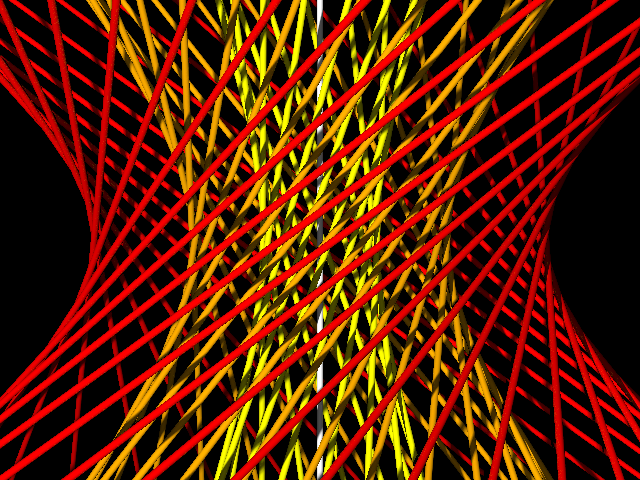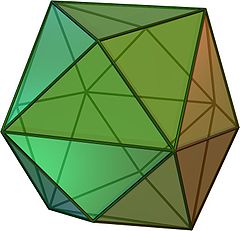Geometric street art in Kanazawa
Kanazawa was this year’s host of Computational Geometry Week and the Symposium on Computational Geometry, and a great place to visit for lots of reasons. One of the lesser reasons is that it also hosts an interesting collection of geometric street art, some of which I photographed on my recent visit.
The first thing you see as you enter the city by the main entrance of its train station is Tsuzumimon, a massive ornamental wooden gate. The two pillars of the gate are made from wood beams in two layers that twist around each pillar in opposite directions. The lintel connecting the two pillars is a lattice of more wood, in a rounded form rather than the more traditional straight beam. The gate supports one end of an airy steel and glass space-frame dome, sheltering the plaza in front of the station from the frequent rain.

Tsuzumi are a certain type of Japanese hand drum, so Tsuzumimon means drum gate, because of the resemblance of the pillars to these drums. But instead, what it most reminds me of is a partition of space into skew lines that I ray-traced in 2010 and use as the header for my Mastodon account page.

A short way along the road to the fish market (worth multiple visits), one encounters this piece, “Corpus Minor #1” by Janne Kristian Virkkunen. Another conference participant told me he thought it resembled a shipping mine, but what it brings to mind to me is either an atomic nucleus or a morula (the complex of cells of a multi-cell organism at the stage of reproduction before they differentiate).

Here’s a more abstracted close-up look.

I’m pretty sure its underlying geometric structure comes from a tetrakis hexahedron, whose edges form the prominent ribs of the sculpture. This would allow it to be constructed by bolting together 24 identical triangular pieces, each containing smoothed-together patches from three of the 14 spherical bulges of the sculpture.

The part of Kanazawa between the station and the fish market is dominated by major boulevards filled with cars, and long waits for crosswalks. To make it somewhat less unfriendly to pedestrian traffic, the city has installed underpasses at several of the major crossings. It’s easy to miss the next piece, at the central hub of the underpass connecting to the fish market itself.

Also seen but not photographed: another large ornamental gate near the back entrance of the station, made of slanted concrete pillars and resembling a support structure for an elevated highway; a black stone monkey saddle in the basement level of the station, near a scale model of Tsuzumimon; a tangled tree of shiny stainless steel tubes across the street from my hotel (a block south of the station); a stylized sundial between the station and the fish market (not very effective in the rain); and many public fountains.